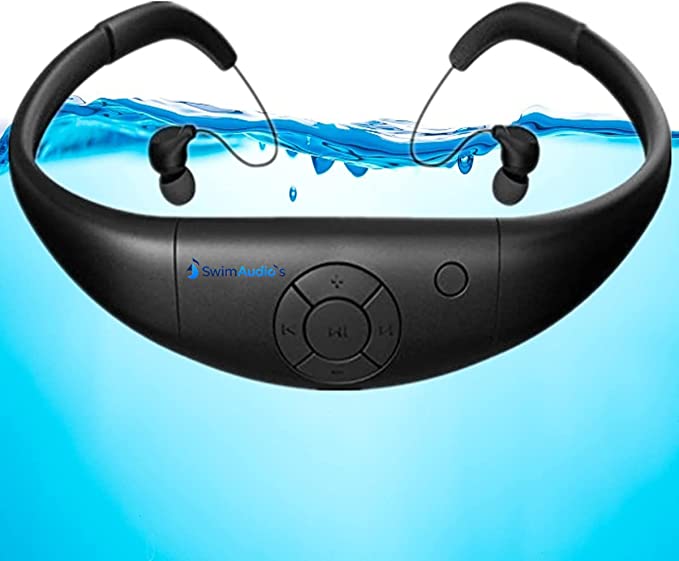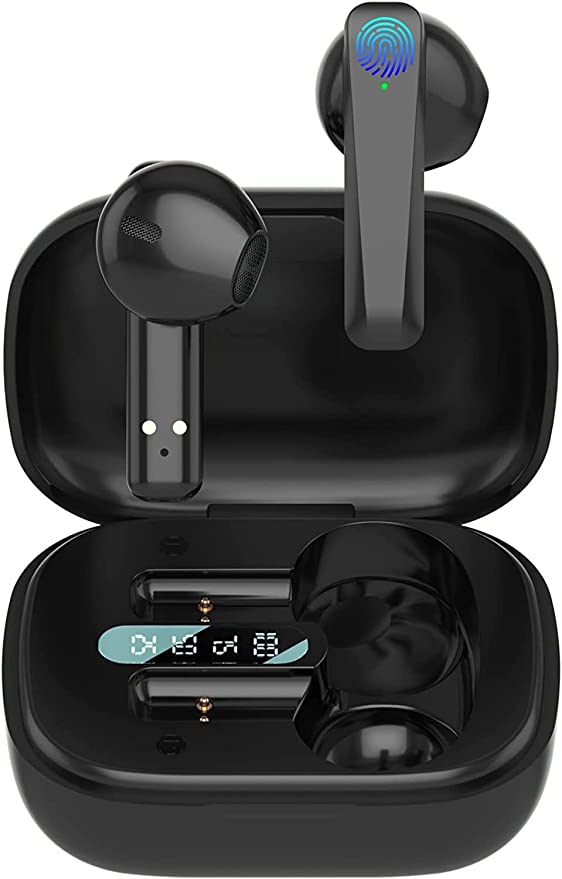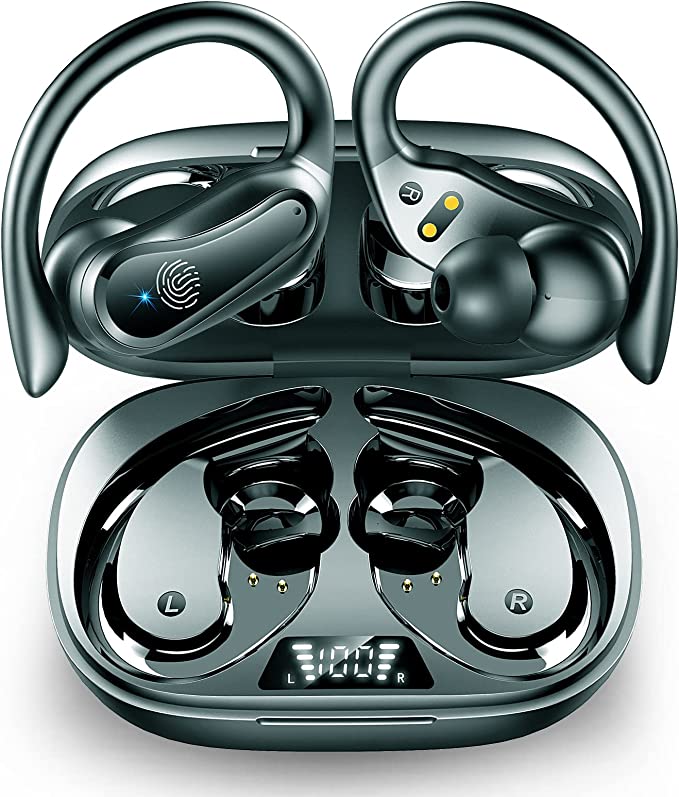The rhythmic splash, the steady cadence of breath, the hypnotic blue line guiding you lap after lap – there’s a unique meditative quality to swimming. But for many, the silence, broken only by the sounds of water and effort, can stretch into monotony. The driving beat that pushes runners further or the motivating melody that fuels a weightlifting session feels worlds away, blocked by a seemingly impenetrable barrier: the water itself. Wouldn’t it be great to bring your personal soundtrack into the pool? It’s a common desire, but one that presents significant technical hurdles. This is where specialized devices, like the Swimaudios 8GB Waterproof MP3 player, enter the picture – gadgets engineered specifically to bridge the gap between music and the aquatic environment. But how exactly do they work, and what challenges do they overcome? Let’s dive into the science and engineering behind bringing audio beneath the surface.

Why Your Phone (and Bluetooth) Stays Dry: Water’s Rules
The first, most obvious question is: why can’t we just use our regular smartphones or standard Bluetooth earbuds? The answer lies in fundamental physics. Water, while seemingly benign, is a harsh mistress to electronics and radio waves.
Firstly, water conducts electricity far better than air, making any breach in a device’s casing potentially catastrophic. More crucially for wireless audio, water is incredibly effective at absorbing radio waves, the very medium Bluetooth relies on. While Bluetooth works wonderfully connecting your phone to earbuds in the air, those same signals are attenuated (weakened) so rapidly underwater that the connection range drops from meters to mere inches. Trying to stream music from a poolside phone or even a smartwatch on your wrist to underwater earbuds is simply a non-starter.
Furthermore, electronics face hydrostatic pressure – the pressure exerted by the weight of the water above. While the pressure at typical swimming depths (a few meters) isn’t immense compared to the deep ocean, it’s more than enough to force water through tiny imperfections in seals designed only for splashes or rain. This necessitates a far more robust approach to waterproofing than everyday “water-resistant” gadgets possess.

Building the Submarine for Your Ears: Unpacking IPX8
This brings us to the cornerstone of any underwater audio device: its waterproofing. You’ll often see an “IP rating,” and for swimming gear, “IPX8” is the target. The Swimaudios player, for instance, claims this rating. But what does it truly mean?
“IP” stands for Ingress Protection. The system uses two numbers. The first digit relates to solid particle protection (like dust); an ‘X’ here, as in IPX8, simply means it hasn’t been tested or rated for dust ingress. The second digit is the crucial one for swimmers – it denotes liquid ingress protection. The scale runs from 0 (no protection) up to 9K (protection against high-pressure, high-temperature spray downs).
An ‘8’ signifies the highest level of protection against immersion. Specifically, IPX8 means the device is suitable for continuous immersion in water under conditions specified by the manufacturer. This is key – unlike lower ratings (like IPX7, which specifies immersion up to 1 meter for 30 minutes), IPX8 implies suitability for prolonged use underwater, but the depth and duration are defined by the maker. For the Swimaudios player, the manufacturer specifies usability up to 3 meters (around 10 feet).
Achieving this level of protection isn’t trivial. It involves meticulous engineering:
* Robust Seals: Think of gaskets, like those used on a submarine hatch, but miniaturized. These are typically made from materials like silicone, which are compressed when the device casing is assembled, creating a watertight barrier around buttons, cable entry points, and seams. Silicone is often chosen for its flexibility, durability, and hydrophobic (water-repelling) properties. The “Silicone Coated” description for the Swimaudios player likely refers to external surfaces or the earbud material itself, contributing to overall water resistance and feel.
* Case Integrity: The housing itself must be designed without weak points and molded precisely to ensure seals function correctly under pressure.
* Material Selection: Materials must resist corrosion from pool chemicals (like chlorine) or saltwater, and maintain their integrity across a range of temperatures. The claimed heat resistance up to 60°C (140°F) for the Swimaudios device suggests the plastics and sealing materials used are stable enough to withstand conditions like a hot tub or hot shower without degrading or warping, which could compromise the waterproof seal.

The Sound Barrier: The Underwater Audio Puzzle
So, the device can survive underwater. But how does it deliver sound effectively to your ears? This is another significant challenge, because sound behaves very differently in water compared to air.
Water is much denser than air. Sound actually travels faster through water, but transmitting it effectively from a small speaker (the ‘driver’ inside the earbud) into your ear canal, which is typically filled with air, is tricky. The main issue is acoustic impedance mismatch. Think of impedance as resistance to sound wave propagation. Air has low impedance, while water and human tissue have much higher impedance. When sound waves traveling through the water (or the earbud material) hit the air gap in your ear canal, most of the sound energy is reflected away, rather than being transmitted to your eardrum. The result? Faint, muffled sound.
This is why the earbud seal is absolutely critical for underwater listening with traditional earbuds. Specialized swimming earplugs, often featuring multiple flanges or specific shapes like those mentioned for the Swimaudios player, are designed to create a watertight seal and displace water from the ear canal entrance. This seal does two things:
1. It prevents water from entering the ear canal, maintaining an air pocket.
2. It physically couples the earbud more directly to the ear, helping to transmit sound vibrations more efficiently towards the eardrum.
The description mentions a “0.2 inches sound unit,” likely referring to the diameter of the dynamic driver inside the earbud. While driver size can influence frequency response (potentially relating to the claimed “perfect bass”), achieving good perceived sound quality underwater hinges far more on establishing and maintaining that perfect, watertight seal. User feedback frequently highlights this: even with a functional player, a leaky seal results in dramatically reduced volume and clarity, often in just one ear if the seal fails there. This remains one of the biggest practical hurdles for users of in-ear underwater audio systems. (It’s also why alternative technologies like bone conduction headphones, which bypass the ear canal entirely by transmitting vibrations through the cheekbones, have gained popularity, though they come with their own set of audio characteristics and challenges).
Staying Put While You Stroke: The Ergonomic Equation
A waterproof MP3 player that sounds great is useless if it falls off during your first flip turn. Swimming involves dynamic, often forceful movements, water resistance, and interaction with other gear like caps and goggles. Designing a device that stays securely and comfortably in place requires careful ergonomic consideration.
The Swimaudios player utilizes a head-mounted frame, described as a “three-pointed triangle” design. The likely rationale is to distribute the contact points and create a stable structure that rests securely on the back of the head, resisting the drag and turbulence generated by swimming strokes. The goal is to keep the main unit (containing the battery and electronics) and the earbuds positioned correctly without excessive bouncing or shifting.
Material choice is key here. The frame is mentioned as being made from PP (Polypropylene). PP is a common choice for such applications because it’s lightweight (contributing to the claimed 32g net weight, minimizing inertia), reasonably strong, fatigue resistant (important for repeated flexing), and offers good flexibility. This flexibility allows the frame to conform to different head shapes to some extent, aiding both comfort and security.
However, human anatomy varies widely. Head size and shape differ significantly between individuals. This is reflected in user feedback where some find the Swimaudios frame comfortable and secure, while others report it feels too tight or doesn’t sit quite right. Achieving a universally perfect fit with a single design is a persistent challenge in wearable technology, especially for dynamic activities like swimming. The short earbud cables are also a deliberate design choice, minimizing slack that could snag or create drag.
Your Personal Playlist, Hardwired: The Necessity of Onboard Storage
Having established that Bluetooth is a non-starter underwater, how do you get your music onto the device? The answer is simple: onboard solid-state memory. The Swimaudios player comes with 8GB of internal storage, which the manufacturer estimates can hold around 2,000 songs. The exact number depends heavily on the audio file format and compression level (bitrate) – higher quality files take up more space.
This reliance on local storage is a fundamental characteristic of virtually all functional underwater audio players. The Swimaudios device simplifies the process by having the main player section detach to reveal a standard USB 2.0 connector. You plug this directly into a computer’s USB port, and it appears like a regular flash drive. Transferring music is typically a matter of simple drag-and-drop of your audio files onto the device. Compatibility is claimed with various Windows versions (from ME/2000 up to Windows 7 in the provided specs) and Mac OS 9.X or higher.
The supported audio formats listed (MP3, WMA, WAV, AAC-LC, OGG, DRM) cover the most common bases. MP3 is ubiquitous, WMA is a Windows standard, WAV is uncompressed (high quality, large files), and AAC-LC is common for Apple devices/iTunes. Support for DRM (Digital Rights Management) might be relevant if trying to play certain protected files, though typically users load their own unprotected music collections.
Powering Through the Kilometers: Battery Life and Considerations
Keeping the music playing throughout your swim session requires a reliable power source. Like most modern portable electronics, waterproof MP3 players typically use rechargeable Lithium-Ion (Li-Ion) batteries. These offer good energy density (more power for their weight and size) compared to older battery chemistries.
The Swimaudios player specifications claim a charge time of 1.5 to 2 hours (via a standard 5V 1A USB source) provides 4 to 8 hours of audio playback. This wide range immediately suggests that actual performance varies. Indeed, user feedback often reports real-world playback times closer to the lower end of this range, frequently cited around 3 to 4 hours.
Why the discrepancy? Several factors influence battery life:
* Volume Level: Higher volume requires more power.
* Audio File Complexity: Decoding more complex files might use slightly more processing power.
* Temperature: While rated for heat, extreme cold or heat can affect battery performance and longevity. Li-Ion batteries generally prefer moderate temperatures.
* Battery Age: All Li-Ion batteries degrade over time and with charge cycles, gradually losing their maximum capacity. A device used frequently for a year will likely not hold the same charge as when new.
* Playback Mode: Continuous playback vs. frequent track skipping or pausing might have minor effects.
Therefore, while the 4-8 hour claim represents a potential maximum under ideal conditions, users are wise to expect a more moderate duration in typical use and to charge the device regularly, perhaps before each swim session, to avoid it dying mid-lap.
Bridging the Gap: When Engineering Meets the Pool Deck
Bringing all these elements together – robust IPX8 waterproofing, carefully managed underwater acoustics, stable ergonomic design, essential onboard storage, and sufficient battery power – represents a significant engineering effort. The goal is to create a device that seamlessly integrates into the swimming experience, providing motivation and entertainment without being intrusive or unreliable.
However, as the user feedback illustrates, there’s often a gap between design intent and the messy reality of diverse users and demanding environments. The challenge of achieving a perfect, comfortable earbud seal for everyone remains significant. Ensuring long-term durability against repeated exposure to pool chemicals, physical stress, and charge cycles is another hurdle – concerns about wiring or device lifespan noted in some reviews highlight this practical aspect. Managing expectations regarding battery life is also important.
Specialized devices like the Swimaudios player showcase the clever application of physics and material science to solve a specific problem. But they also remind us that engineering often involves trade-offs, and the “perfect” solution must balance performance, usability, durability, comfort, and cost.

Finding Your Flow: The Verdict on Underwater Audio Tech
For swimmers seeking to break the monotony of laps or add a new layer of enjoyment to their workouts, waterproof MP3 players offer a compelling solution. By overcoming the fundamental challenges of water immersion and underwater sound transmission, devices like the Swimaudios 8GB player aim to deliver your personal soundtrack directly to your ears while you swim.
They represent a fascinating intersection of material science, acoustic engineering, ergonomic design, and electronics. While practical hurdles like achieving a perfect fit and ensuring long-term durability persist across the category, the technology itself provides a tangible benefit for many aquatic enthusiasts. Understanding the science and engineering behind these gadgets allows for a more informed appreciation of their capabilities and limitations. Whether it’s pushing through a tough set or simply finding a more meditative rhythm, the ability to listen to music underwater continues to be a welcome innovation for those who find their flow beneath the surface.




